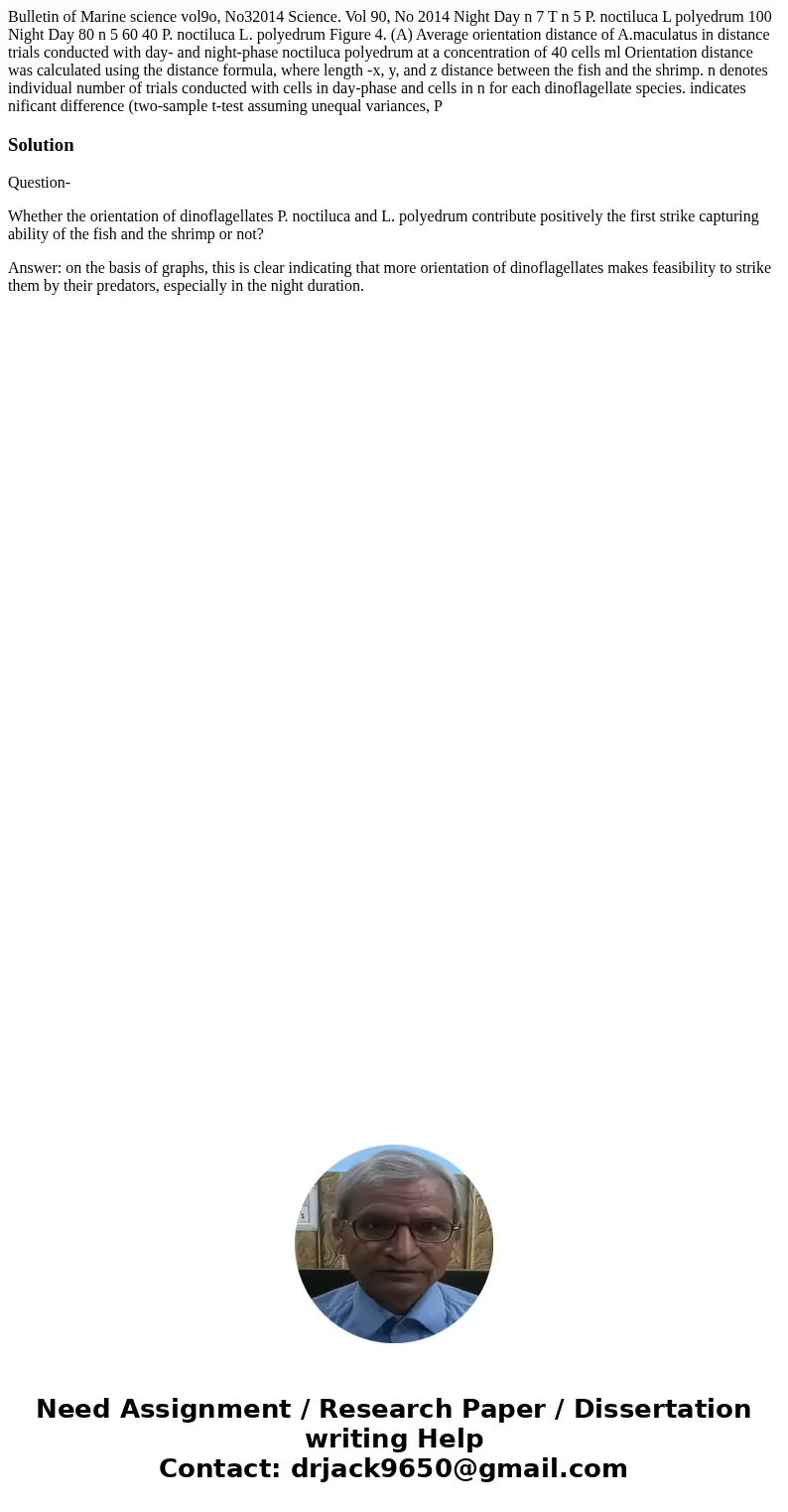Bulletin of Marine science vol9o No32014 Science Vol 90 No 2
Bulletin of Marine science vol9o, No32014 Science. Vol 90, No 2014 Night Day n 7 T n 5 P. noctiluca L polyedrum 100 Night Day 80 n 5 60 40 P. noctiluca L. polyedrum Figure 4. (A) Average orientation distance of A.maculatus in distance trials conducted with day- and night-phase noctiluca polyedrum at a concentration of 40 cells ml Orientation distance was calculated using the distance formula, where length -x, y, and z distance between the fish and the shrimp. n denotes individual number of trials conducted with cells in day-phase and cells in n for each dinoflagellate species. indicates nificant difference (two-sample t-test assuming unequal variances, P
Solution
Question-
Whether the orientation of dinoflagellates P. noctiluca and L. polyedrum contribute positively the first strike capturing ability of the fish and the shrimp or not?
Answer: on the basis of graphs, this is clear indicating that more orientation of dinoflagellates makes feasibility to strike them by their predators, especially in the night duration.

 Homework Sourse
Homework Sourse